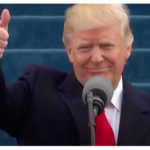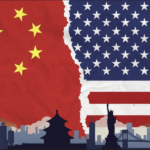AI in VFX: Transforming the Future of Visual Effects marketresearchfuture.com
Artificial Intelligence (AI) is rapidly transforming the Visual Effects (VFX) industry, revolutionizing how content is created, edited, and rendered. Traditionally, VFX processes were time-consuming and required significant manual effort, especially for complex tasks like rotoscoping, motion capture, facial animation, and environment generation. With AI-driven tools and algorithms, many of these tasks can now be automated or significantly accelerated, allowing studios to save both time and costs while achieving high levels of realism and creativity.
One of the most impactful uses of AI in VFX is in rotoscoping—the process of isolating characters or objects from a scene. AI-based tools can now automatically detect and track elements frame-by-frame, drastically reducing the hours of manual labor needed. This not only improves efficiency but also ensures consistency across frames.
AI also enhances motion capture and character animation. Instead of relying solely on suits and markers, AI algorithms can interpret human movement from video footage alone. This markerless motion capture approach allows for more flexibility during shoots and opens doors for smaller studios that may not have access to high-end equipment. Additionally, AI-powered facial animation tools can generate subtle expressions and lip-syncs in real-time, significantly enhancing character realism.
In environment creation and scene enhancement, AI is capable of generating highly detailed landscapes, cityscapes, and even imaginary worlds. Tools driven by generative AI can extrapolate data from existing environments to build new scenes, making it easier for artists to create immersive worlds. This technology also assists in texture mapping, lighting adjustments, and scene composition—key elements in producing high-quality VFX.
Moreover, deepfake and AI compositing techniques are gaining traction in the film and TV industries. AI can convincingly replace actors\' faces, de-age characters, or even create realistic digital doubles. While these technologies come with ethical considerations, they have already shown their potential in major productions, offering creative possibilities that were once impossible or too costly.
AI also plays a significant role in rendering optimization. Rendering is one of the most resource-intensive stages in VFX production. AI can predict and fill in complex frames with minimal rendering, significantly cutting down production time without sacrificing quality. Neural networks trained on high-resolution images can enhance the resolution and detail of scenes, enabling faster previews and final renders.
From a creative standpoint, AI empowers artists to focus more on storytelling and innovation rather than tedious technical processes. However, it’s important to note that AI does not replace human creativity—it enhances it. VFX professionals still guide, refine, and add the artistic touch that machines cannot replicate.
As AI continues to evolve, its integration into VFX workflows is expected to deepen, leading to faster turnaround times, cost-effective productions, and increasingly breathtaking visuals. The synergy between AI and human talent is paving the way for a new era of filmmaking where imagination is the only limit.
Reference – https://www.marketresearchfuture.com/reports/ai-in-vfx-market-26565







Leave Your Comment